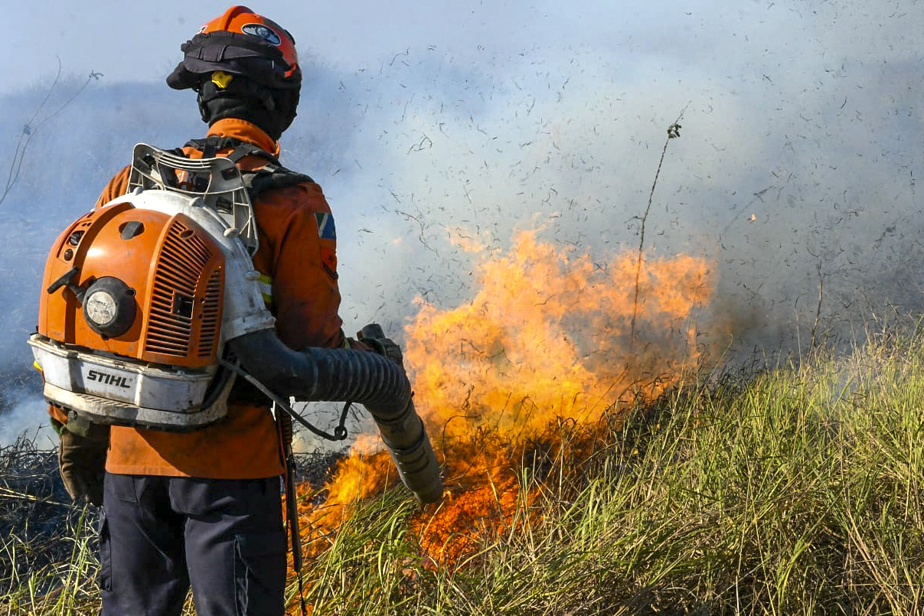What is new about the study?
“There have been other studies on the increase in the number of forest fires, in their average size,” explains the lead author of the study published Monday in the journal Nature Ecology & Evolution, Calum Cunningham, University of Tasmania. “But the average doesn’t tell us much about the most devastating fires, which are natural disasters. So we focused on the extremes. »

PHOTO FROM THE UNIVERSITY OF TASMANIA WEBSITE
The lead author of the study published Monday in the journal Nature Ecology & EvolutionCalum Cunningham
With 20 years of satellite data, Australian researchers assessed extreme fires, which represent only 0.01% of total wildfires. Among this group, fires in 2023 are twice as frequent as those in 2003. “Six of the last seven years are among the most extreme,” Cunningham says.
Before 2003, there was no comparable satellite data to assess fire intensity. The forest fires in Quebec’s far north last summer were part of this category.
Why focus on the most intense forest fires?
Martin Girardin, a Canadian Forest Service researcher who published last winter in the journal Communications Earth & Environment a study on forest fires over the last 12,000 years in Quebec confirms that this approach is an interesting innovation.
“They looked at the intensity of the energy released by forest fires,” says Mr. Girardin. We’re talking about 99.99e percentile, that’s really extreme. It is interesting that these more intense fires are increasing. »
Fires release the most CO2 in the atmosphere, because they can burn humus down to inorganic soil, Cunningham said. And they have a disproportionate effect on ecosystems. The Australian megafires of 2019 and 2020, for example, wiped out 2.8 billion invertebrates and the entire range of 116 plants, according to a 2021 study cited by Cunningham.
What is the situation in Quebec?
According to the forest classification used by Mr. Cunningham, the north of the province – along a line running roughly from Tadoussac to Rouyn-Noranda – is made up of boreal forest and taiga, the category most affected by the increase in forests. extreme fires: they are seven times more frequent than 20 years ago.
Southern Quebec is in a category that has seen almost no increase in these extreme fires.
In western Canada, there is another category of forests particularly affected by the increase in extremes, with a frequency 11 times higher.
Boreal forests are also found in Russia. “ [La situation] is roughly similar in Russia and North America,” says Cunningham.

PHOTO MARTIN TREMBLAY, LA PRESSE ARCHIVES
Fire in the James Bay region last August
Could greater efforts to fight wildfires have skewed the data?
Potentially, but in the case of forests far north, they are often not fought, notes Mr. Cunningham. “This is also one of the paradoxes of fighting forest fires: the more quickly we suppress fires, the more fuel they leave behind which accumulates, and the greater the risk of further fires. more intense. »
Mr. Girardin believes that such intense fires are rarely fought. “Once a fire becomes very, very intense, there is nothing to do, we have to remove the equipment and the firefighters, it is too dangerous. Even planes can’t do anything about it. »
What more can be done to fight these intense fires?
In Australia, authorities are considering using herbivores, such as kangaroos and rabbits, to eat vegetation and limit available fuel. “It gives one more argument for the preservation of these species,” says Mr. Cunningham.
A recent Canadian study showed progress in calculating the direction of fire propagation, notes Mr. Girardin. And there are controlled burning programs, to further limit the amount of fuel available. “But we can’t do that in the big wilderness areas where most of the big fires occur. »
Learn more
-
- 568,000 hectares
- Forest fire area in Canada as of June 19, 2024
source: natural resources canada
- 6 million hectares
- Area of forest fires in Canada as of June 21, 2023
source: natural resources canada
